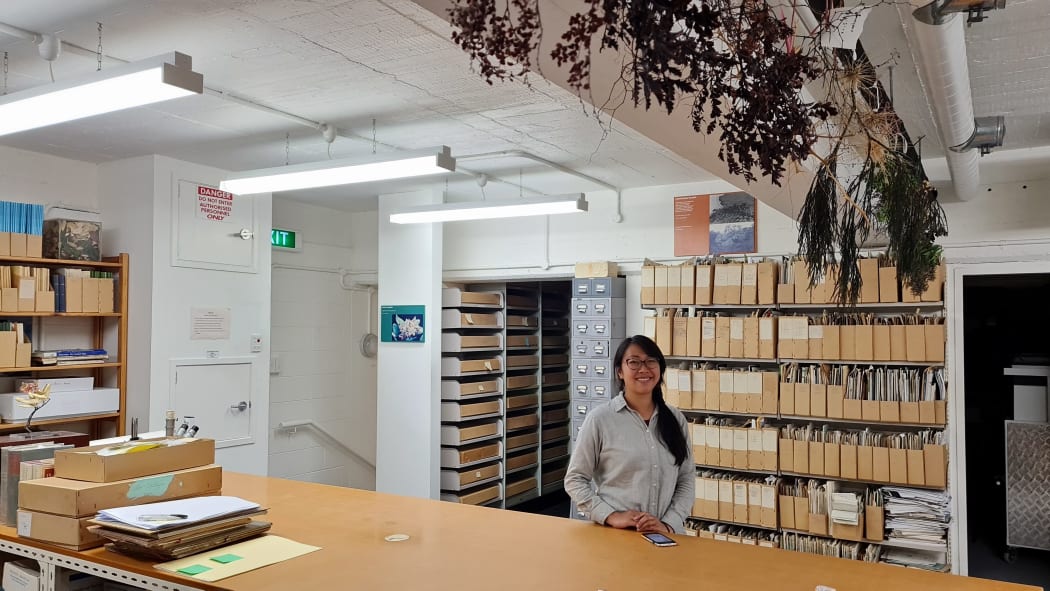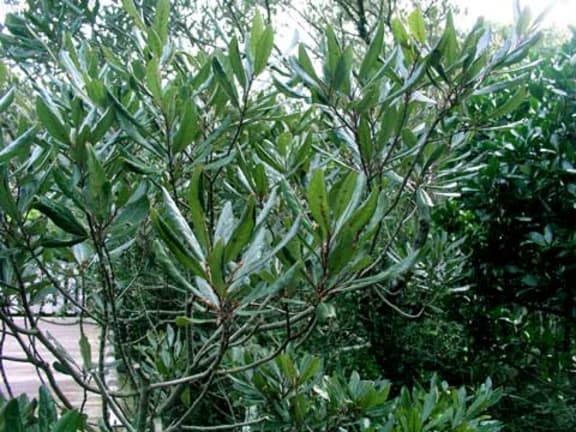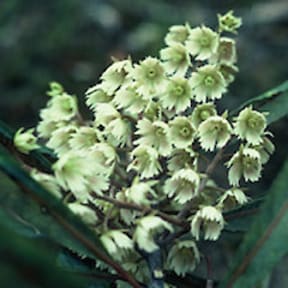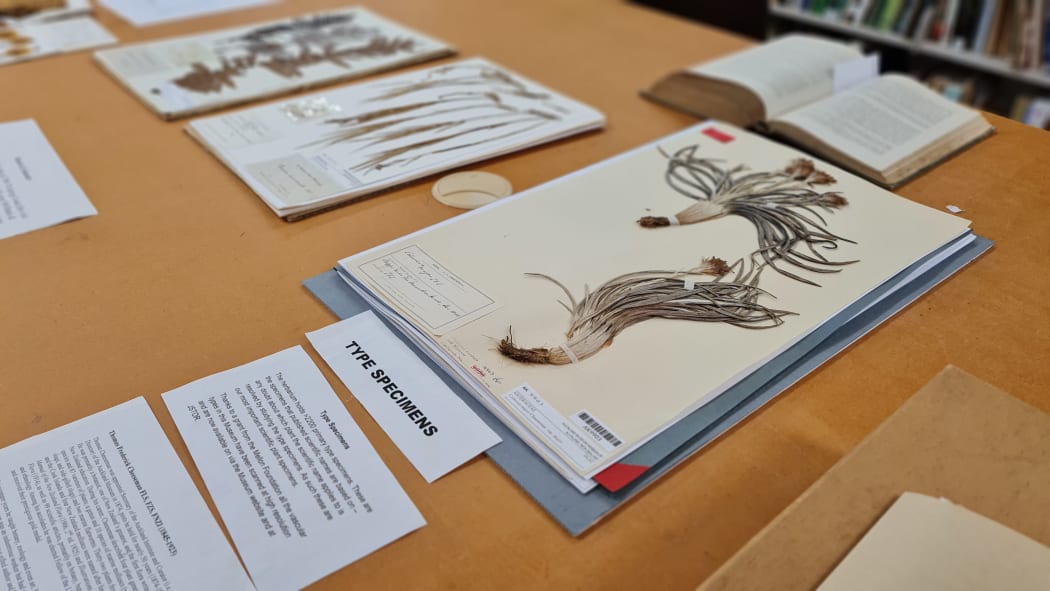“They’re beautiful plants. The flowers are fringed, like a tutu, a ballerina's costume"
Detail is the biggest deal for Japan-born Botanist Yumiko Baba; and one New Zealand native tree has had her fairly detail-obsessed over the passed few years.
FOLLOW Voices on Apple Podcasts, Spotify, Stitcher, Radio Public and iHeart Radio or wherever you listen to your podcasts.
Elaeocarpus Dentatus, known in te reo as Hinau, is what she calls her "baby group" that she has been studying since 2013.

Yumiko Baba, Associate curator of Botany, Auckland Museum Photo: RNZ/Kadambari Gladding
Yumiko is the Associate Curator for Botany at Auckland Museum and has been researching Hinau and its morphology – or specifically, phytomorphology.
Eleocarpus is spread widely across the Asian region and Australasia as well, with varieties differing depending on the region. The more temperate, the climate, the more subtle in appearance, basically.

The Hinau tree Photo: Te Ara Encyclopedia of New Zealand
"In New Zealand, the trees depend more on the breeze for pollination rather than birds and bees, so as a result the flowers are smaller, less colourful" she says about Hinau.
In New Zealand, Hinau has tiny white fringed flowers, and the berries are small and dark purple. Traditionally, Maori have used the berries in cooking and the bark can be used for making dyes. In the Indian sub-continent, the Eleocarpae family of trees is where the sacred seeds of "rudraksh" come from, used as prayer beads.
Listen to Yumiko's story on Voices.

Hinau flowers Photo: New Zealand Plant Conservation Network
For Yumiko, a love for plants goes back a long way- it's a love that began in Ono, her hometown.
"Ono means literally small field. It's surrounded by rice field, fringed by secondary forest. And as a child, with friends, we were always in that forest running around just. I think that the environment really shaped me."
Her parents have an eye for detail she says, "so maybe they passed it on".
My mother tells me that I always brought back mosses and weeds to plant in her immaculate lawn. She didn't stop me. So that also helped nurture my interests."
At the herbarium a regular day for Yumiko means being sometimes surrounded by specimens over 200 years old, like those collected on Cook's first voyage to New Zealand on the Endeavour, with botanists Banks and Solander.

Specimens from the Banks and Solander collection at Auckland Museum. Joseph Banks and Daniel Solander collected about 350 species of plants during Cook's Endeavour voyage in 1769. Photo: RNZ/Kadambari Gladding
Speaking of the relevance of the rather specific nature of her Hinau interest she says, "it may seem like miniscule work but many plants are disappearing even before they get names these days. I think collectively, a taxonomists work is very important. And you can't collect this knowledge in a day. It's an accumulation of many centuries of taxonomist work."
Listen to the full podcast :


